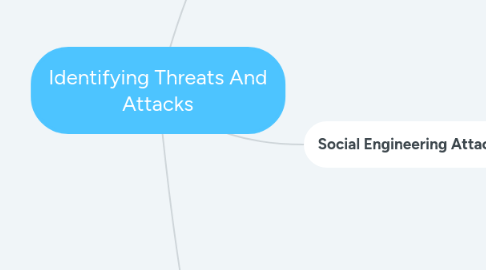
1. Intruders
1.1. Types of attack
1.1.1. Passive
1.1.1.1. Eavesdropping Traffic Analysis
1.1.2. Active
1.1.2.1. Active attack (1)
1.1.2.1.1. 1)Masquerade 2)Replay
1.1.2.2. Active attack (2)
1.1.2.2.1. 1) Modification of messages 2) Denial of service
2. Social Engineering Attacks
2.1. IMPERSONANTION
2.1.1. disguised as a help desk to collect confidential personal information
2.2. PHISHING
2.2.1. Fake site for steal our personal information
2.3. SPAM
2.3.1. Annoying repeated messages
2.4. HOAXES TYPO SQUATTING
2.4.1. A message warning the recipients of a non-existent computer virus threat. The message is usually a chain e-mail that tells the recipients to forward it to everyone they know, but it can also be in the form of a pop-up window.
2.5. PHYSICAL ATTACK
2.5.1. Physical attacks (also called kinetic attack) are. intentional offensive actions which aim to destroy, expose, alter, disable, steal or gain unauthorised access to physical assets such as infrastructure, hardware, or interconnection.
3. Malware (Malicous Software)
3.1. Viruses
3.1.1. File infector virus
3.1.2. Resident virus
3.1.3. Boot virus
3.1.4. Companion virus
3.1.5. Macro virus
3.1.6. Metamosphic viruses
3.1.7. Polymorphic Viruses
3.2. Worms
3.2.1. Email Worms
3.2.2. Internet Worms
3.2.3. File-Sharing Networks Worm
3.3. Spyware
3.3.1. Adware
3.3.2. Keyloggers
3.4. Logic Bomb
3.4.1. A Logic Bomb is a piece of often-malicious code that is intentionally inserted into software. It is activated upon the host network only when certain conditions are met.
